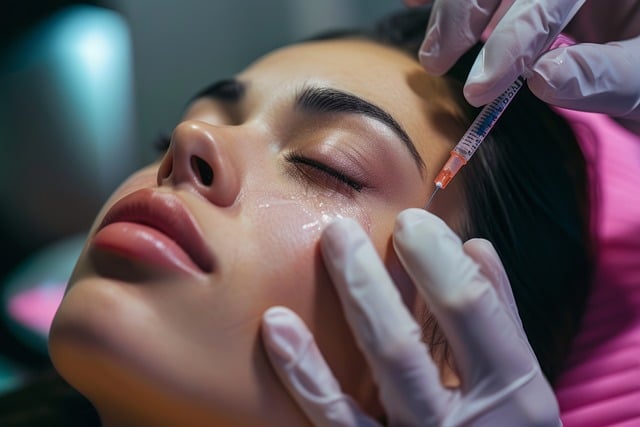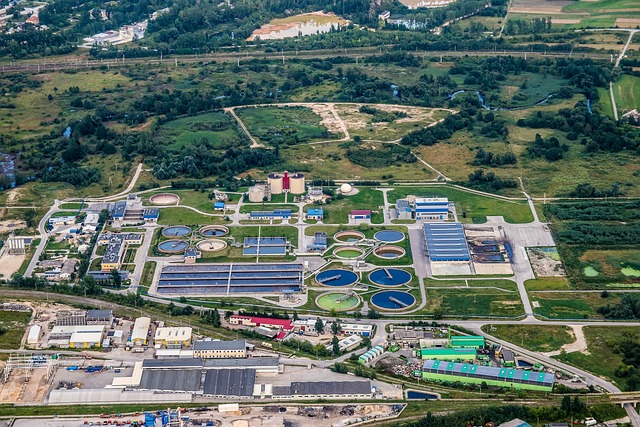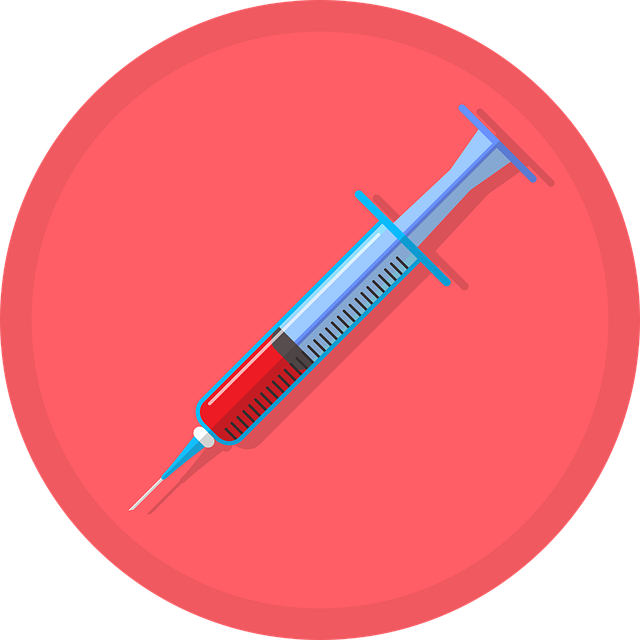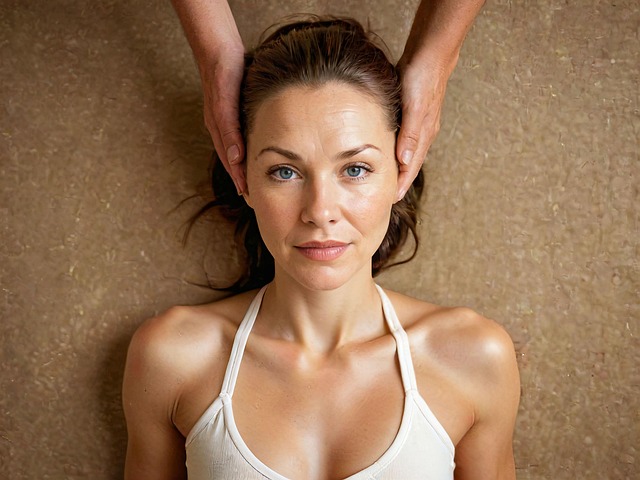Botox treatments offer a safe, effective way to reduce fine lines and wrinkles without surgery. The 15-30 minute procedure involves injecting botulinum toxin into targeted muscle groups, paralyzing them to prevent creases. Results last several months, enhancing skin texture and achieving a more youthful look. Botox is versatile, addressing diverse cosmetic concerns across various facial areas. With proper post-treatment care, including rest, hydration, and follow-ups, patients can maintain optimal results while minimizing rare adverse reactions.
“Uncover the secrets of non-surgical Botox treatments and transform your appearance without the need for invasive procedures. This comprehensive guide delves into the science behind Botox, explaining how it works at a cellular level. From addressing specific concerns like wrinkles and frown lines to providing a step-by-step insight into the non-invasive process, we cover it all.
Learn about the benefits, safety measures, and recovery tips for these popular aesthetic enhancements, offering you an informed decision for your beauty regimen.”
Understanding Non-Surgical Botox Treatments: A Comprehensive Overview

Botox treatments have revolutionized non-surgical cosmetic procedures, offering a safe and effective way to reduce the appearance of fine lines and wrinkles. These treatments involve the injection of botulinum toxin into specific muscle groups, temporarily paralyzing them and preventing the contraction that causes aging-related facial creases.
Understanding how Botox works is essential when considering these treatments. The procedure is typically quick, taking just 15-30 minutes, and minimally invasive, with only minor discomfort. Results can last for several months, providing a noticeable improvement in skin texture and a more youthful appearance. Different areas of the face can be targeted, depending on individual needs, making Botox an adaptable solution for various cosmetic concerns.
How Botox Works: The Science Behind the Procedure

Botox works by blocking nerve signals that cause muscle contractions, which over time can lead to wrinkles forming on our skin. This procedure involves injecting a small amount of botulinum toxin into specific areas of the face where dynamic wrinkling is present. The science behind it lies in its ability to temporarily paralyze muscles, preventing them from tightening and thus reducing the appearance of lines and furrows.
These Botox treatments are highly targeted, aiming to relax specific muscle groups responsible for certain facial expressions that contribute to aging. By inhibiting these contractions, Botox can smooth out fine lines and wrinkles, offering a more youthful and relaxed appearance without any surgical incisions or downtime.
Benefits and Applications: Addressing Specific Concerns

Botox treatments have gained immense popularity for their non-surgical approach to addressing specific concerns related to aging and facial aesthetics. One of the key benefits is its ability to temporarily reduce the appearance of fine lines and wrinkles, offering a more youthful complexion. This is particularly effective in areas like the forehead, crow’s feet around the eyes, and frown lines between the brows.
Additionally, Botox can be strategically injected to relax specific muscle groups, providing facial symmetry and reducing the signs of stress or age-related changes. These treatments are highly versatile, catering to a wide range of individuals seeking to enhance their natural features without invasive surgeries. Many patients appreciate the convenience, rapid recovery, and natural results that Botox procedures offer, making them a popular choice in the cosmetic industry.
The Non-Invasive Process: Step-by-Step Guide

The non-invasive Botox procedure is a simple and effective way to achieve youthful-looking skin without surgery. Here’s a step-by-step guide to understanding this popular treatment:
1. Consultation: Begin with a comprehensive consultation. During this time, your provider will assess your facial structure, discuss your concerns, and determine the best injection points for optimal results. They’ll also consider your medical history to ensure Botox is suitable for you.
2. Pre-Treatment Care: Prior to the procedure, follow your practitioner’s instructions for pre-treatment care. This might include avoiding certain medications or supplements that could increase bleeding risk. It’s essential to stay hydrated and avoid excessive alcohol consumption in the days leading up to your treatment.
3. Injection Process: On the day of your treatment, a small amount of Botox will be injected into specific muscles across your face. Using fine needles, your provider will target areas like the forehead, temples, and eye regions, depending on your individual needs. The process is usually quick, taking around 15-30 minutes.
4. Post-Treatment Recovery: After the injections, you might experience minor redness or swelling at the injection sites. This is typically temporary and subsides within a few hours to a couple of days. You can resume your normal activities immediately, but it’s advisable to avoid strenuous exercise or extreme temperatures for a short while.
Safety and Effectiveness: What to Expect and Potential Risks

When considering non-surgical Botox treatments, it’s crucial to understand both their effectiveness and safety. Botox, a neurotoxin derived from bacteria, has been extensively studied and approved for various cosmetic uses. Numerous clinical trials have proven its efficacy in reducing the appearance of fine lines and wrinkles, especially around the eyes and forehead. When administered by a qualified professional using sterile techniques, Botox treatments are generally safe with minimal side effects.
However, like any medical procedure, there are potential risks associated with Botox. Common temporary side effects include mild bruising, swelling, or discomfort at the injection site. In rare cases, patients may experience more serious adverse reactions such as headaches, drooping eyelids, or difficulty swallowing. It’s important to discuss these possibilities openly with your provider and be aware of any unusual symptoms post-treatment. Regular follow-up appointments help ensure optimal results while minimizing risks.
Post-Treatment Care: Recovery, Maintenance, and Follow-up Tips

After your non-surgical Botox treatments, proper post-care is essential for optimal results and to minimize any potential side effects. It’s crucial to follow your healthcare provider’s specific instructions, but here are some general tips for a smooth recovery process. First, rest and avoid strenuous activities for the first 24 hours to prevent discomfort or bruising. You may experience mild swelling or redness at the injection sites, which is normal and usually subsides within a few days. Staying hydrated by drinking plenty of water can help reduce any temporary redness and swelling.
Regular follow-up appointments with your provider are vital for maintenance and to ensure the longevity of your results. They can assess the progress, address any concerns, and recommend additional treatments if needed. In between visits, maintain a healthy lifestyle with a balanced diet and regular exercise, as this supports overall skin health. Avoid certain medications and supplements that may increase bleeding risks, and always inform your provider about any new medications or supplements you start taking.
